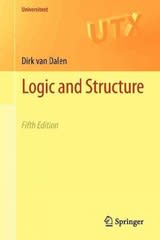
This assignment is directly linked to the following key learning outcomes from the course syllabus: CL01: Fit, interpret, and evaluate regression models using standard functions and diagnostic techniques. CLOZ: Correct issues with overfitting, linearity, multicollinearity and outliers. CLOS: Select best model from multiple predictors using automated techniques. Assignment Summary For this exercise, you will need to download the attached AmesHousing dataset. In this assignment, you will implement the skills you have learned to fit, interpret and evaluate a regression model. Once you have completed steps 1 through 14, prepare a report to document your ndings. Assignment 1. Load the Ames housing dataset. 2. Perform Exploratory Data Analysis and use descriptive statistics to describe the data. 3. Prepare the dataset for modeling by imputing missing values with the variable's mean value or any other value that you prefer. 4. Use the cor function to produce a correlation matrix of the numeric values. 5. Produce a plot of the correlation matrix, and explain how to interpret it. [hint - check the corrplot or ggcorrplot plot libraries) 6. Make a scatter plot for the X continuous variable with the highest correlation with SalePrice. Do the same for the X variable that has the lowest correlation with SalePrice. Finally, make a scatter plot between X and SalePrice with the correlation closest to 0.5. Interpret the scatter plots and describe how the patterns differ. Using at least 3 continuous variables, t a regression model in R. 8. Report the model in equation form and interpret each coefficient of the model in the context of this problem. 9. Use the plotO function to plot your regression model. Interpret the four graphs that are produced. 10. Check your model for multicollinearity and report your findings. What steps would you take to correct multicollinearity if it exists? 11. Check your model for outliers and report your ndings. Should these observations be removed from the model? 12. Attempt to correct any issues that you have discovered in your model. Did your changes improve the model, why or why not? 13. Use the all subsets regression method to identify the "best" model. State the preferred model in equation form. 14. Compare the preferred mode] from step 13 with your model from step 12. How do they differ? Which model do you prefer and why? >1








